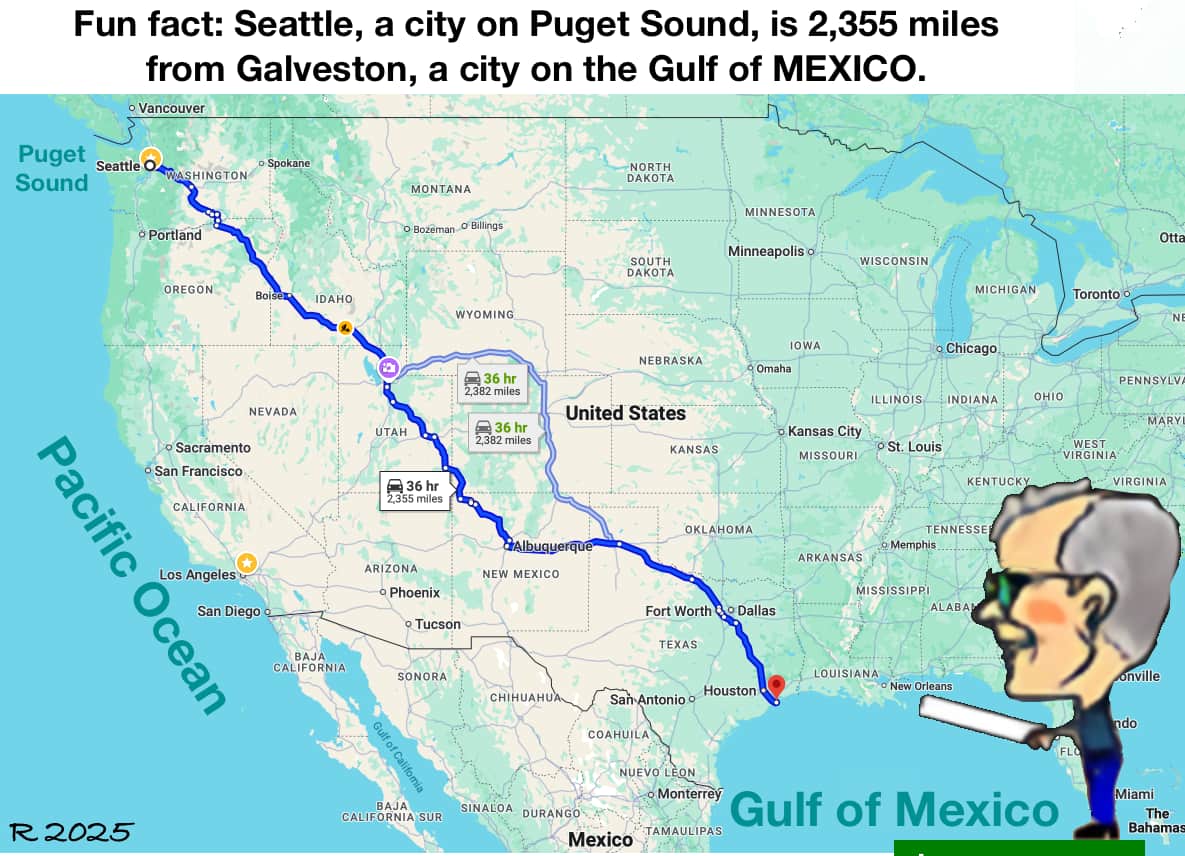Some advocacy group has been posting photographs supposedly of alternative modes of transportation in the Seattle. Note to the noncognoscenti: these photographs show the only level street in all of downtown Seattle, specifically on Second Avenue.
Any other route—for example any street crossing Second Avenue itself and continuing more than a block or so—requires climbing hills at 45° angles. It is a popular fantasy of the sandals and ponytail set that cars can be completely replaced by other means of transportation. The reality is that residents of the urban area travel not in straight lines as shown but in thousands of sporadic and random trips among millions of random destination. Most of those trips originate and end outside the municipality of Seattle in other municipalities whose local governments' propensity for competition exceeds their desire for cooperation.
By far the greater problem is the storage of all the needed vehicles between trips; paradoxically, Seattle is allowing high-density construction without parking, which adds to the backup in congested areas. Walking or cycling on the few level streets in the metropolitan area may be a healthful alternative for twentysomethings, but it is surely inappropriate for taking children to after-school activities or elderly residents to appointments or shopping.
Greater Seattle and surrounding counties are in the process of building a fixed-rail transit system, whose origins and destinations in addition to downtown Seattle include several suburban shopping malls, many of which are in decline under pressure from online purchase and delivery systems. That system, like many in older eastern cities, maybe come maladapted to future residential working patterns.
Happily a better solution is on the horizon in the form of autonomous vehicles that are not owned by their occupants but instead respond to short-term demand for travel between random origins and destinations without regard for arbitrary starting and ending times such as the eight-hour workday. In the interim, buses are the alternative that offers both predictable routing and flexibility. The challenge is not technological but social, as buses hardly confer high social status on their riders.
Sadly, the political battle is the most intractable part of this problem. The overwhelming disparity of the funds available to the automobile and gasoline lobbies compared to the alternative approaches makes it unlikely that rationality will prevail.

Community Log & News Digest
☰
Categories
Recent Posts
- DOGE attack on food security reaches Seattle
- Battery Battle Intensifies in Nevada
- Glazed Salmon Delights as Entree, Salad topping
- Get off my lawn, Don!
- Vance Whopper Channels Musk, DOGE minion
- The 'Hands-off' tally is in
- Hands-off rallies draw thousands
- Your Vote is Your Voice
- And the winner is...
- US Service Organization Assists Uganda Family
- Whidbey Island Fire Destroys Startup Farm - Arson Suspected
- International Women's Day 2024, Lynnwood March 8
- KOMO-TV's Steve Pool dies at 70
- Quick thinking prevents destruction on Elliott Bay
- The Role of Lutefisk in Achieving World Peace
